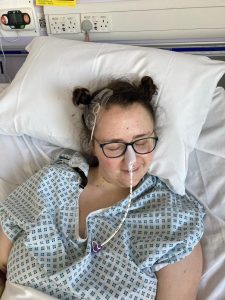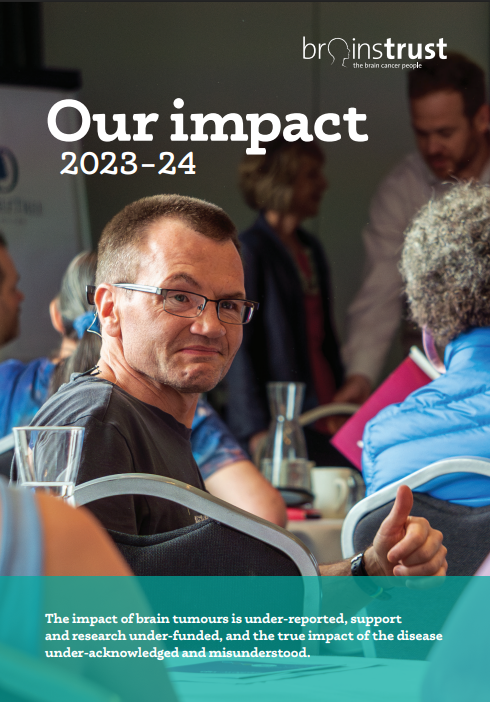
In June 2024, just three weeks before I was due to finish my nursing degree, I received a life-changing diagnosis: a low-grade brain tumour. At the time, I was juggling clinical placements, coursework, and plans for my future in nursing. But looking back, the signs were there. I had been suffering from intense headaches and migraines, tingling down the right side of my body, and moments of clumsiness and imbalance. I brushed most of it off — telling myself it was probably stress, or maybe I’d just bumped myself. My care began in Nottingham, where I was completing my training. Instead of the summer I had planned, I spent it going from appointment to appointment, from scan to scan. It was overwhelming, but I tried to stay focused. I knew I wanted to move back to Yorkshire to be closer to family and to start my new grad nursing job — a job I was genuinely excited about.
 Once I moved back home, my care was transferred to Leeds, the nearest major hospital. I met my neurosurgeon in December 2024. Because the tumour’s exact nature was uncertain and the location delicate, we agreed that an awake craniotomy would be the safest route. It was terrifying — but I trusted the team, and I was determined.
Once I moved back home, my care was transferred to Leeds, the nearest major hospital. I met my neurosurgeon in December 2024. Because the tumour’s exact nature was uncertain and the location delicate, we agreed that an awake craniotomy would be the safest route. It was terrifying — but I trusted the team, and I was determined.
Once I moved back home, my care was transferred to Leeds, the nearest major hospital. I met my neurosurgeon in December 2024. Because the tumour’s exact nature was uncertain and the location delicate, we agreed that an awake craniotomy would be the safest route. It was terrifying — but I trusted the team, and I was determined.
In February 2025, I underwent a 9-hour awake craniotomy. The surgery was successful. The tumour was completely removed. I thought the hardest part was behind me.
But three days later, I had an aneurysm. Everything spiraled. What should have been a short recovery turned into a nightmare. I underwent three more brain surgeries, was placed in a medically induced coma, and spent a week in intensive care. I don’t remember those days — but my family does. My short hospital stay became five long weeks.
 When I woke, I had to start from scratch. I had to relearn how to walk, talk, and use my body again. It was frustrating. Humbling. Exhausting. But five months later, I’m back living independently. I still have daily rehab appointments, and it can absolutely wear me out — but it’s worth it, every single time.
When I woke, I had to start from scratch. I had to relearn how to walk, talk, and use my body again. It was frustrating. Humbling. Exhausting. But five months later, I’m back living independently. I still have daily rehab appointments, and it can absolutely wear me out — but it’s worth it, every single time.
As for my tumour — it’s still being studied. It’s likely a neuronal or mixed neuronal-glial tumour, and it’s now been sent to Great Ormond Street Hospital for further classification. The unknowns remain, but so does my determination.
I was a student nurse when I became a patient. Now, I’m both — and that gives me a perspective on care, empathy, and resilience that I could never have learned from a textbook.









